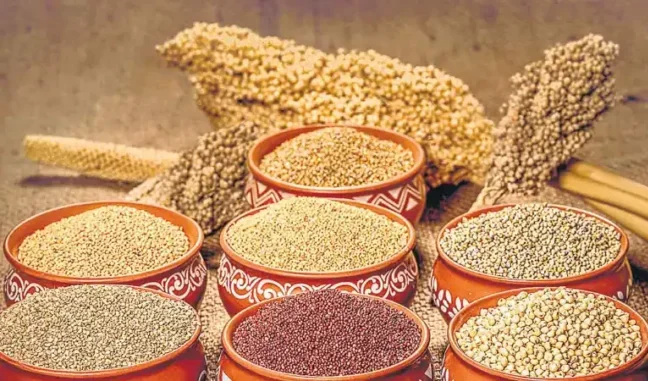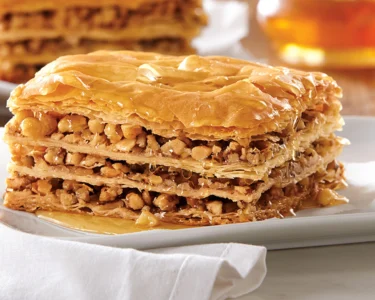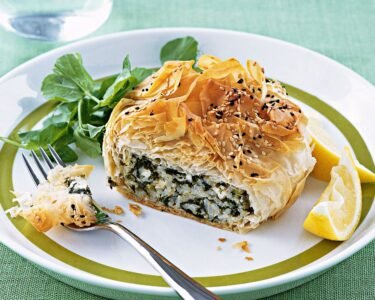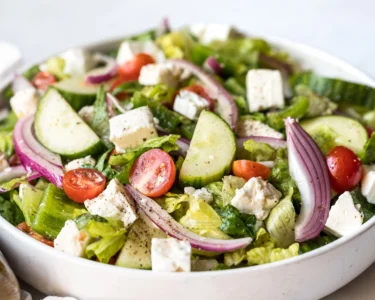Millets are nutritionally rich and diverse
Millets, known for their nutritional richness and versatility, make an excellent addition to winter diets. These ancient grains offer a range of health benefits and can be incorporated into various dishes to provide warmth, energy, and nourishment during the colder months. Let’s know about the different types of millets and how they can be incorporated into your diet.
Finger Millet (Ragi)
Rich in calcium, iron, and fiber, finger millet, or ragi, is a winter-friendly millet that provides essential nutrients. The high fiber content aids digestion, preventing digestive issues commonly associated with cold weather. Ragi is also a good source of warmth, making it an ideal choice for the winter season. It can be consumed in the form of porridge, rotis, or added to soups for a nutritious boost.
Pearl Millet (Bajra)
Pearl millet, commonly known as bajra, is a staple winter grain in many regions. It is rich in iron, magnesium, and phosphorus, essential minerals that contribute to overall health. Bajra is known for its warming properties, making it an excellent choice for winter consumption. It can be used to prepare rotis, khichdi, or even added to soups and stews for a hearty and nutritious meal.
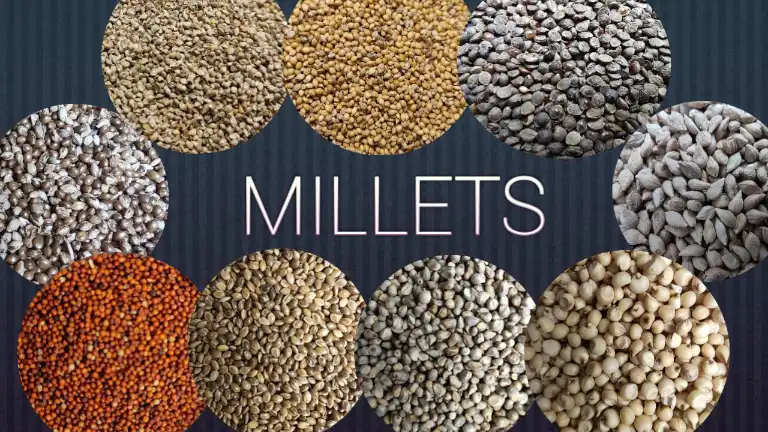
Sorghum (Jowar)
Jowar, or sorghum, is a gluten-free millet that is highly versatile and nutritionally dense. It is an excellent source of dietary fiber, protein, and antioxidants. Jowar’s complex carbohydrates provide sustained energy, keeping the body warm during colder days. Including jowar in the form of rotis, porridge, or upma can be a nutritious way to combat winter lethargy and boost overall health.
Foxtail Millet
Foxtail millet is rich in protein, fiber, and minerals such as iron and magnesium. It is a low-glycemic-index grain, making it suitable for those looking to manage blood sugar levels. Consuming foxtail millet during winter provides a sustained release of energy, helping to keep the body warm. It can be used in various recipes, including pulao, khichdi, and dosas, offering a healthy and warming alternative to traditional grains.
Proso Millet (Pani Varagu)
Proso millet, also known as pani varagu, is a nutritious millet option for the winter season. It is a good source of vitamins, minerals, and antioxidants. The warming nature of proso millet makes it suitable for colder months, and its versatility allows it to be incorporated into a variety of dishes, such as upma, pulao, or even desserts. The high fiber content aids in digestion and promotes a healthy gut.
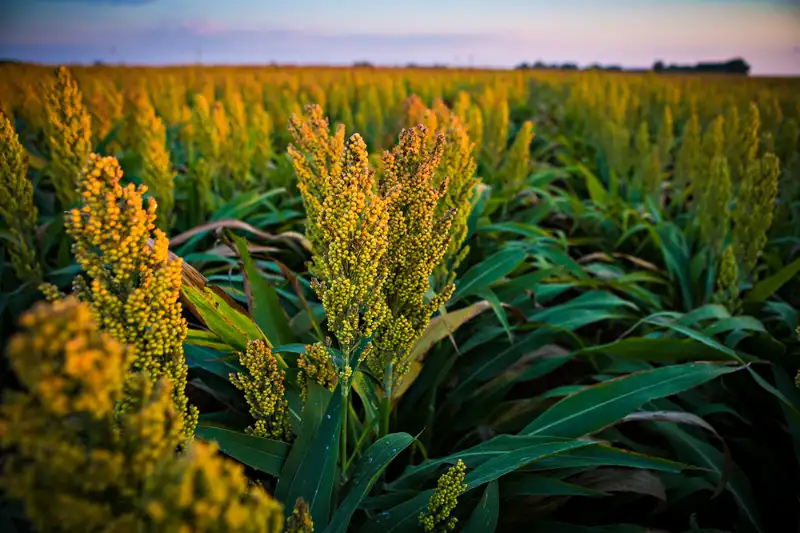
Little Millet (Samai)
Little millet, or samai, is a small-grained millet rich in fiber, B-vitamins, and minerals. Its nutritional profile makes it an excellent choice for winter consumption. Little millet can be used to prepare a range of dishes, including rice replacements, upma, and porridge.
Kodo Millet
Kodo millet is a nutrient-dense millet that provides a good amount of protein, fiber, and essential minerals. It is known for its ability to regulate blood sugar levels, making it a suitable option for individuals with diabetes. Including kodo millet in winter meals can offer sustained energy and warmth. It can be used to prepare dishes like pulao, khichdi, or as a rice substitute in various recipes.
Little millet can be used to prepare a range of dishes, including rice replacements, upma, and porridge. Its warming properties and nutrient content contribute to overall well-being during the colder months.
Barnyard Millet (Sanwa)
Barnyard millet, also known as sanwa, is a gluten-free grain rich in fiber, iron, and calcium. It is easy to digest and provides a quick energy boost. The warming nature of barnyard millet makes it an ideal choice for winter. It can be used in the preparation of upma, khichdi, or even desserts, offering a nutritious alternative to traditional grains.
Incorporating millets into winter diet
Porridge: Millet porridge made with any of the mentioned millets can be a comforting and nutritious breakfast option. Sweeten it with honey or add fruits for added flavor and health benefits.
Rotis and Bread: Millet flour can be used to make rotis or bread, providing a wholesome alternative to refined wheat flour. This is an excellent way to include millets in daily meals.
Khichdi: Prepare a nutritious and warming khichdi using a combination of millets, lentils, and vegetables. Season it with warming spices like cumin and black pepper.
Pulao: Millets can be used as a base for pulao, incorporating a mix of vegetables, herbs, and spices to create a flavorful and hearty dish.
Upma: Millets can be used in place of semolina to make a healthy and warming upma. Add vegetables, nuts, and spices for added taste and nutrition.
Soups and Stews: Add cooked millets to soups and stews to enhance their nutritional content. The grains absorb the flavors of the broth, creating a wholesome and filling dish.
Desserts: Millets can be used in dessert recipes, such as puddings, kheer, or even as a base for healthy energy bars. This allows for a sweet treat while still reaping the nutritional benefits.



